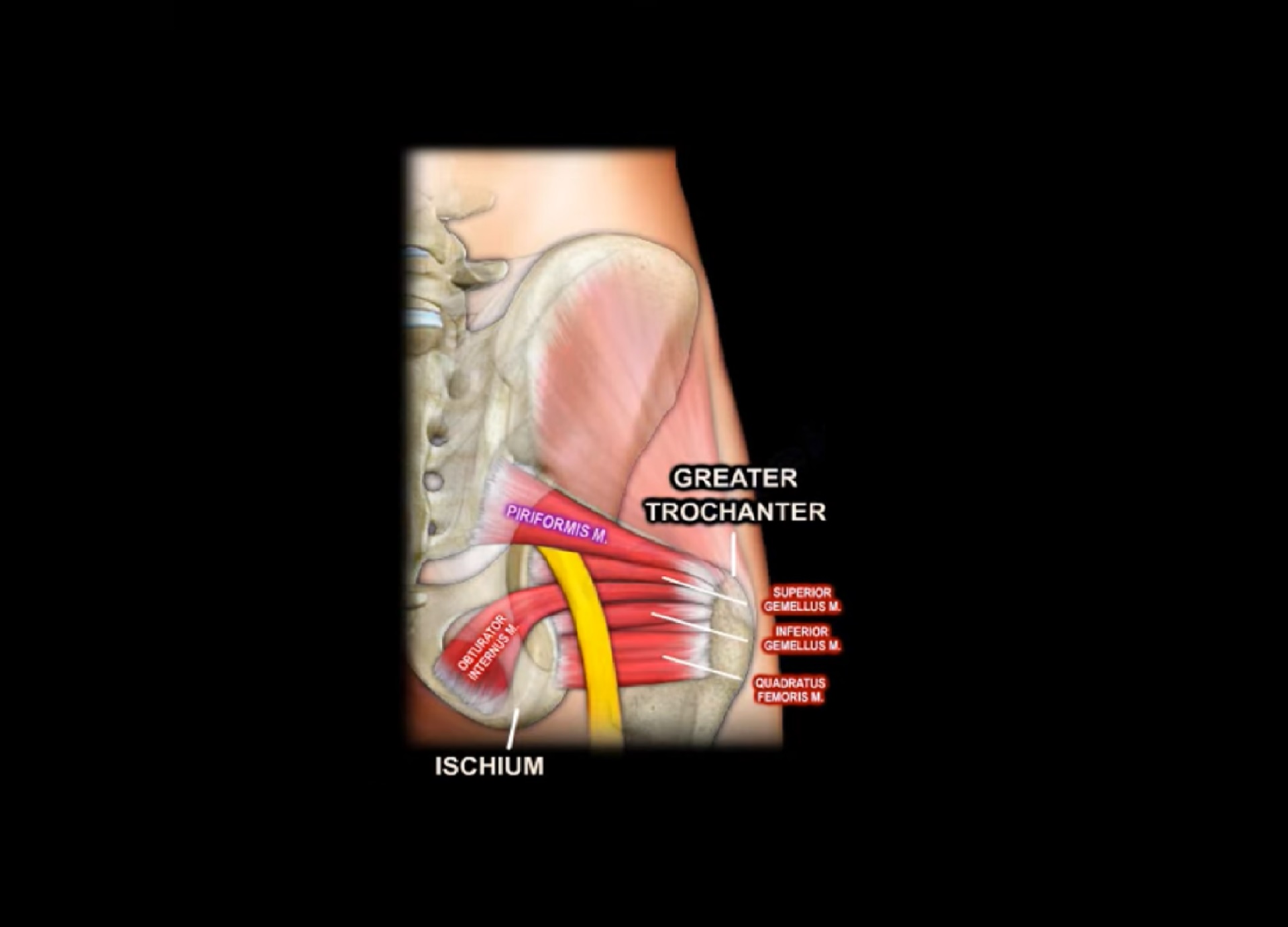Courtesy: Prof Nabil Ebraheim, University of Toledo, Ohio, USA
• Sciatic nerve is the largest nerve in the body
• It arises from L4,L5,S1,S2,&S3
• It has two main components
1. Tibial nerve
2. Common peroneal nerve
• The level of the division of the Sciatic nerve is variable, but it usually occurs at the middle or the lower third of the thigh
• In about 10% of the patients, the division of the Sciatic nerve can occur at the greater Sciatic foramen
• As the Sciatic nerve enters the pelvis through the greater sciatic notch, the nerve passes underneath the piriformis muscle
• The tibial nerve is the medial nerve and it descends down vertically towards the tibia
• Common peroneal nerve is the lateral nerve or Fibular nerve
• The Sciatic nerve leaves the pelvis through the greater sciatic foramen, normally below the piriformis muscle in about 88% of the time (it is usually anterior to it). It will reach the gluteal region under cover of the gluteus maximus muscle
• From the gluteal region where the Sciatic nerve is covered by gluteus maximus muscle, the nerve runs downwards to the back of the thigh
• The Sciatic nerve lies between greater trochanter and the ischium and as it descends anterior to the piriformis muscle, it crosses posterior to the tendon of the gemelli muscles, the obturator internus muscle and the quadratus femoris muscle
• Sciatic nerve is anterior to the Piriformis but posterior to the Obturator internus
• In the upper part of the thigh, sciatic nerve is covered by the long head of biceps femoris muscle ( nerve is deep to the biceps femoris)
• As the nerve descends in the thigh close to the midline, it is crossed obliquely by the long head of biceps femoris muscle
• This crossing of the long head of biceps femoris muscle over the Sciatic nerve looks like an “X”
• In the rest of its course in the thigh, the sciatic nerve is covered by the biceps femoris and by the hamstring muscles
• High in the thigh before the divides, the sciatic nerve supplies the hamstring muscles which are the long head of biceps femoris, the semimembranosus, the semitendinosus, in addition to the ischial part of the adductor magnus muscle.
BRANCHES OF THE SCIATIC NERVE
• All these branches to the muscles come from the medial side of the Sciatic nerve
• The short head of the biceps femoris is innervated by the common peroneal nerve
• The lateral border of the sciatic nerve is safer during dissection or surgery
• The sciatic nerve ends just above the popliteal fossa by dividing into common peroneal and tibial nerves

Leave a Reply